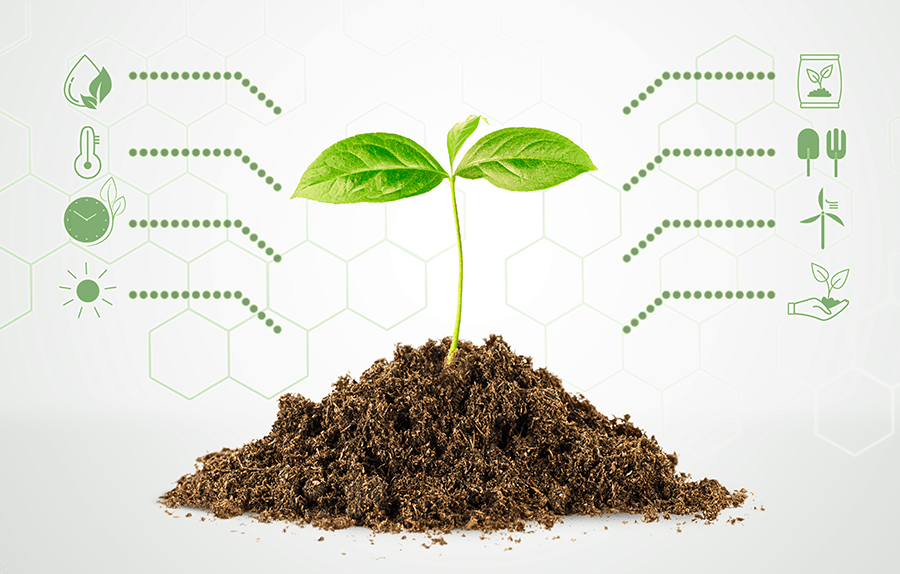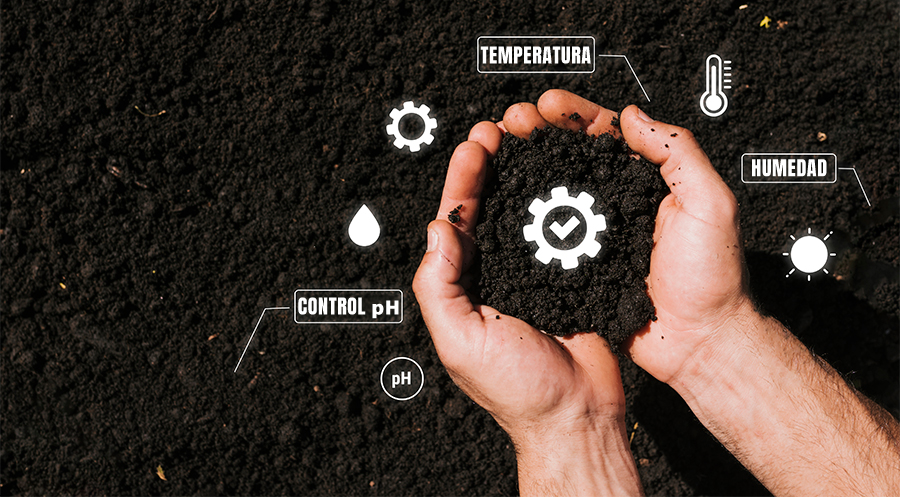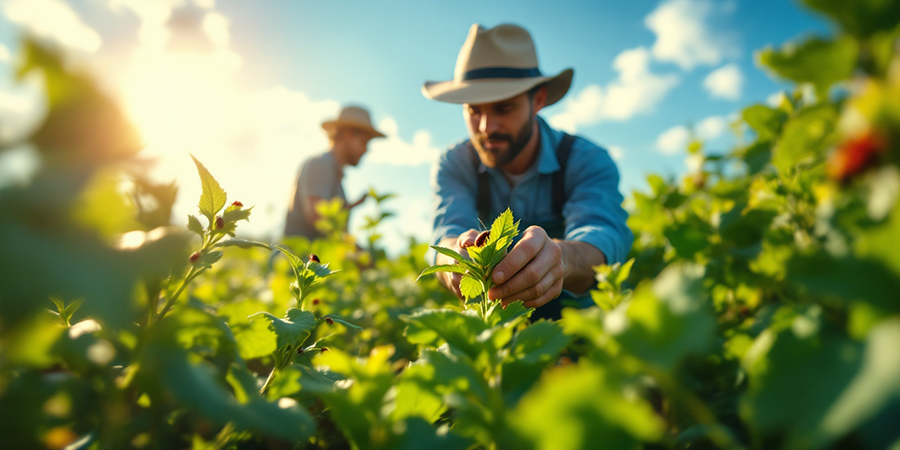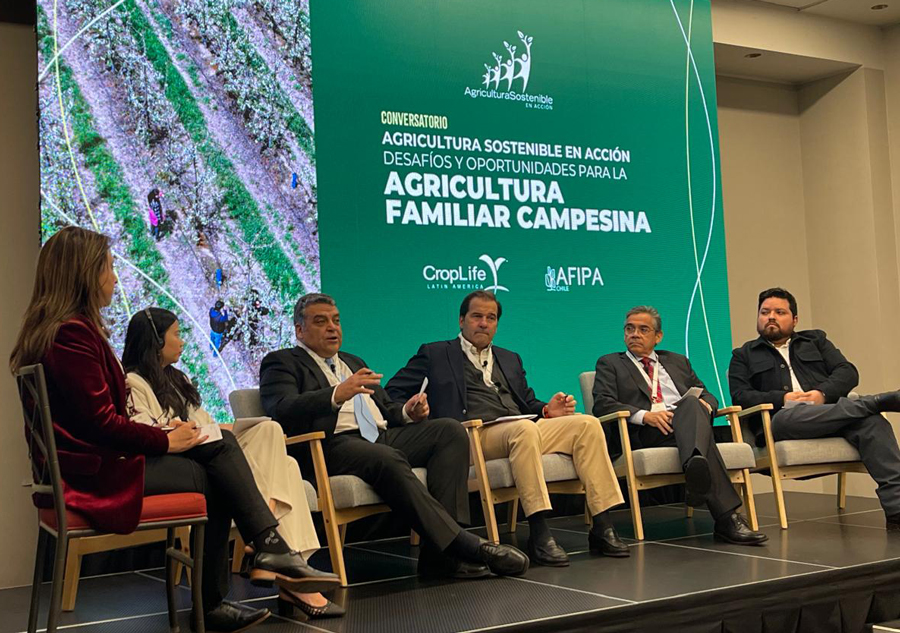The objective of Sustainable Agriculture is to raise awareness about the agricultural production process, given the challenge that the generation of food that can satisfy the needs of a global population estimated at 9.7 billion people by the year 2050 represents for the sector ( UN 2019).
By Agr Jorgelina Lezaun
Agribusiness & Marketing Consultant
South America Region
March 2024
Based on the sustained increase in demand, the growth of competitiveness is necessary within an environment that must preserve its resources over time.
Taking into account that the global land area is 13.2 billion hectares and of the total 1.6 billion hectares (12%) are dedicated to agricultural cultivation, 3.7 billion hectares (28%) have forestry activity and 4.6 billion hectares ha (35%) correspond to grasslands and forest ecosystems, the concepts of productivity and sustainability are of great relevance.
Agriculture produces a large environmental footprint and also has an important role in climate change, water scarcity, land degradation, deforestation and other processes (Brown, LR -2012).
Depending on how the function of agricultural activity is interpreted, there are different approaches to the “sustainability of agriculture”:
- Multifunctional focuses on each individual agricultural system. Agriculture appears as a multifunctional activity along with other functions - management of renewable resources, landscape conservation and biodiversity - (Rent, H.; Rossing, WAH; Groot, JCJ; Van der Ploeg, J.D.; Laurent, C.; Perraud, D.; Stobbelaa , DJ; Van Ittersum, MK -2009) in addition to the production of food and fiber.
- Ecosystem services where it is postulated that people and society receive benefits, called "ecosystem services." (Huang, Jiao; Tichit, Muriel; Poulot, Monique; Darly, Ségolène; Li, Shuangcheng; Petit, Caroline; Aubry, Christine -2014). (Tilman, David; Cassman, Kenneth G.; Matson, Pamela A.; Naylor, Rosamond; Polasky, Stephen -2002). These services include pollination, soil formation, and nutrient cycling that are necessary for food production (Sandhu , Harpinder S.; Wratten , Stephen D.; Cullen, Ross -2010).
- It is also stated that sustainable agriculture is best considered as an eco-systemic approach to agriculture, called agroecology ( Altieri, Miguel A. -1995)
Factors affecting sustainability
The most important factors for crop development are climate, soil, nutrients and water, with soil management and water conservation being the most susceptible to human intervention. Likewise, nutrient depletion without replacement negatively influences sustainability.
To achieve sustainability, the natural resources of soil and water must favor nutrient cycles since they are finite and within the framework of exclusively extractivist processes, the environmental system would be deteriorated with the impossibility of sustaining productivity over time. Although this detrimental effect on resources occurs over the long term, it is a gradual and cumulative process.
The production process has inputs and outputs to the system, functions that maintain generating cycles of natural resources and their state, which is why it is key to understand the inputs required and technologies to apply so that the cycles are sustained over time.
Traditional farming methods have a low carbon footprint, but excessive soil tillage and irrigation without proper drainage can cause long-term damage including soil erosion or loss and salinization respectively.
Sustainable intensification of agriculture has become a priority for the United Nations to achieve increased productivity and places specific importance on broader environmental outcomes.
Vertical farming is also a concept with potential advantages of year-round production, isolation from pests and diseases, controllable resource recycling, and reduced transportation costs.

Management practices to preserve resources
- Water: Use efficiency can be improved by reducing the need for irrigation and using alternative methods that involve researching drought-resistant crops, monitoring plant transpiration and reducing soil evaporation.
- Soil and nutrients: Soil amendments include the use of compost from recycling centers. The use of household waste compost uses the resources available in the area.
Direct sowing or refraining from tilling the soil before planting and leaving the residue or stubble of the plant after harvesting reduces the evaporation of water from the soil and achieves a lower temperature of the soil surface. It also serves to prevent erosion.
Soil inoculation with phosphate-solubilizing microorganisms, known as PSM, is an alternative to making rock phosphate more effective as they solubilize phosphorus and utilize the remaining phosphorus through the production of organic acids and ion exchange reactions to render the phosphorous in plant-available form.
Phosphorus absorption is more efficient with the presence of mycorrhizae in the soil given the mutualistic symbiosis between plants and fungi, since they absorb nutrients, including phosphorus, in the soil. Mycorrhizae can also release organic acids that solubilize otherwise unavailable phosphorus. - Pests and weeds: Soil vaporization can be used as an alternative to chemicals for soil sterilization as it helps prevent pests and improve soil health.
Also, solarization, which increases soil temperature to eliminate pathogens and pests.
Certain plants can be grown for use as "natural" fumigants, because they release pest-suppressing compounds when crushed, incorporated into the soil, and are covered with plastic for four weeks. As an example, Brassicaceae release large amounts of toxic compounds such as methyl isothiocyanates. -
Crop management and livestock activity: Crop rotation and cover crops prevent soil erosion by protecting the topsoil from wind and water.
Additionally, they reduce pest pressure on crops and replenish soil nutrients. Increasing crop diversity through the introduction of new genetic resources can increase yields.
Perennial crops reduce the need for tillage and help mitigate soil erosion and can sometimes tolerate drought better, increase water quality, and help increase soil organic matter.

Sources:
-
Brown, L. R. (2012). World on the limit. Earth Policy Institute. Norton. ISBN 978-1-136-54075-2
-
Rockström, Johan; Williams, John; Daily, Gretchen; Noble, Andrew; Matthews, Nathanial; Gordon, Line; Wetterstrand, Hanna; DeClerck, Fabrice; Shah, Mihir (May 13, 2016). "Sustainable intensification of agriculture for human prosperity and global sustainability" . Ambio. 46 (1): 4–17. doi: 1007/s13280-016-0793-6 . PMC5226894 . PMID27405653 .
-
Rent, H.; Rossing, W.A.H.; Groot, JCJ; van der Ploeg, J.D.; Laurent, C.; Perraud, D.; Stobbelaar, DJ; Van Ittersum, M. K. (May 1, 2009). "Exploring multifunctional agriculture. A review of conceptual approaches and perspectives for an integrative transition framework." Environmental Management Journal . 90 : S112 – S123. doi: 1016/j.jenvman.2008.11.014 . ISSN0301-4797 . PMID19121889
-
Huang, Jiao; Tichit , Muriel; Poulot , Monique; Darly , Ségolène ; Li , Shuangcheng Petit, Caroline; Aubry , Christine ( October 16, 2014). "Comparative review of multifunctionality and ecosystem services in sustainable agriculture." Management Magazine Environmental . 149 : 138-147. doi : 1016 / j.jenvman.2014.10.020 . PMID25463579 .
-
Tilman, David; Cassman , Kenneth G.; Matson, Pamela A.; Naylor, Rosamond; Polasky , Stephen ( August 8, 2002). "Agricultural sustainability and intensive production practices." Nature . 418 (6898): 671–677. Bib Code : 418..671T . doi : 10.1038/nature01014 . PMID12167873 . S2CID3016610
-
Sandhu , Harpinder S.; Wratten , Stephen D.; Cullen, Ross (February 1, 2010). "Organic agriculture and ecosystem services." Science and politics environmental . 13 (1): 1–7. doi : 1016 / j.envsci.2009.11.002 . ISSN1462-9011
-
Altieri, Miguel A. (1995) Agroecology: The science of sustainable agriculture . Westview Press , Boulder, CO.






























